Fire temple of Azarbarzin Mehr – Golamkan Green Spring, Sabzevar or Neishabur?? (The first part)
Are Zoroastrians fire worshipers or its admirers?
For a week, they will stand in front of Yazdan as if they are arsonists
When the fire was burning in front of the altar, it was full of water when it saw the worshiper
The place of fire among Iranians
But if we want to divide the fires based on the place where profit is taken from them, there are three categories.: Household fires, the fire related to the tribe and people, which was called "Azran" and the special fire of a larger province or region, which was called "Bahram fire". All of them are a species of Azarbahram. Each of these three fires were specific to a certain class of society (A special class does not mean social classes or the social status of people, but a trade class.) Like what is known today as the Blacksmiths Board, Hosseiniyeh Bezazha, etc … we have. And as Azar "Fran Bagh" (It means the holder of Farah Yazidi) which some people consider its location in Mount Rashan in Kabul and a group of Fars Karians and it is related to Mobdan, Azar "Gashesab" or "Gashensab" (It means owner of a stallion) In the Shiz of Azerbaijan, which belonged to the kings and soldiers Location of "Barzin Mehr" fire temple (It means the fire of Mehr Balande) which is special for farmers or farmers, is known as Neishabur in Rivand Mountain.The interesting thing to note is that these three fires had a mythical existence in the beginning. As well as the name of Azarfarnbagh to "Jamshid", Azargashnesb to "Ki Khosro" and Azarbarzin Mehr to "Gashtasab"Attribute.
It is also stated in "Bandesh Handi" that: "These three fires, which are Azarfarnabgh, Gashnesb and Barzinmehr, were created by Ormuzd from the beginning of creation as three fires".
In the later eras of the formation of these myths, these three fires found an earthly form and each of them enjoyed a special place in their time, so that every king went to the fire temple of Azar Goshensab on foot to pray and perform religious rituals, or to give gifts. And he has offered endowments to these fire temples. The Sassanians, who revived many traditions and customs of the kings before them, also did the same..
The sanctity and importance of these fires becomes clear when we know that they swear by them.. We read in a part of "Khorde Avesta" that the sinner swears by the fire of Yakareh and Pett (Apology) wants: "Fire Bahram, help Azar Farnbagh."! I regret all my sins and I forgive you".
The ritual of affection
First, it is stated in "Mehrisht" that: "That lord of the country, that seal of the wide pasture, ride from the right side of this vast land of Goisan to the shore." And this is not a land in Iran except Khorasan.
Another is the meaning of Khorasan, which is "the place where the sun rises".. That is, the place where Mehr's daily work begins. Therefore, perhaps we can cautiously, between the geographical position of Khorasan in Iran (According to its meaning) and Mehr, to establish a connection, which of course is nothing more than a guess.
Existing hypotheses about the geography of fire temple in Azarbarzin, Mehr
First of all, Azar Mehr Barzin Nihad in Kashmer Nagar, how much is the ritual of Nihad, if we consider the recording of "Kashmir" to be correct - because in some versions "Kashor" is written instead of it.- We see that Zachii knows the place of Barzin Mehr fire temple in Kashmir and he knows the location of the cypress tree that Zarathustra brought from heaven, next to this fire place.:
One of them was free from heaven in Azar and Bekhsht. Some versions have written "Kashmir" instead of Azar, which has no difference in the original, because it is mentioned in the previous verse that the fire temple was built in Kashmir.. Due to the fact that Zachhi is a knowledgeable Zoroastrian poet, he naturally had access to original sources or texts.. Therefore, his words should be considered and should not be dismissed at once. With this description, we can extend the range of Rivand to Kashmir. The existence of villages named Rivand in Kashmir and west of Sabzevar, may be able to show us the boundaries of this ancient land.: The quarter of Rivand starts from the boundary of the Jame Mosque and reaches the farm of Ahmedabad - first, the boundary of Beyhaq- continues. This point is also confirmed by the history of Baihaq by Ibn Fandaq, and in the explanation of the first quarter of the twelve quarters of Bayhaq, he mentions several villages, among which the mentioned Ahmedabad is also included, and he even considers the village of "Senjarider" or Seng Klidar today as part of the Rivand quarter. says: "The name of each quarter was added to the village in which there was Ma'mur and more." It means that there was and continues to be a village or place with the same name in Rivand district : "Rivand, which the quarter is attributed to, was a large village with a great mosque and many khanqahs. In mentioning the provinces of Neishabur, it clearly mentions that the Beyhaq province is located on the borders of Rivand.. So it is understood that this area was a land between Neishabur and Sabzevar. Today, there is no trace of Rivand mentioned by al-Hakam, only the name of that quarter remains on one of the villages of Neishabur.. But the villages of Rivand, Kashmar and Sabzevar still continue to live. Now the question arises, what is meant by their being "close" to each other and how far is this distance?
The reasons for the inaccuracy of the existence of Azar Barzin Mehr fire temple in Sabzevar
In this trouble, the presence of a building a few kilometers north of Rivand Sabzevar has led some to think that they have found the Burzin Mehr cremation ground and they insist on accepting this claim, but for some reasons this statement is not acceptable.:
The four-arched "Devil's House" which is located in the mountains north of the small village of Kaif is also in the same row of buildings..
۳- The smallness of this building is also worthy of thought. A fire temple belonging to the farmers of a country must have a larger and more magnificent structure, while the house of the demon with all its side buildings - of which not much remains today- It may not have the capacity of fifty people.It may seem that because this fireplace belongs to the third group of society, i.e. farmers and farmers, it was less important and its construction was not taken seriously, while this fire was very important in Zoroastrianism, as in the book We read the Pahlavi narration that Hormazd sends three things to Gustasb's house to invite him to the new religion.: Bahman, Ardibehesht and Azarbarzin. It is even mentioned that this fire was without firewood and burned spontaneously. Undoubtedly, the poet was aware of this fact and wrote like this:That seal was blue smoke, not light from firewood and smoke (Recurrence) The story of the fire burning without firewood deserves more thought because we do not know whether they are telling it only in terms of the fact that they intended a miracle for Zoroaster or not.. This point has led the researchers to believe that the fuel for this fire was provided by a type of gas that was available in the Rivand mountains.. There is also such a theory about the fire place of Suleiman Mosque.
Maxim Siro, who introduced the fire temple of Suleiman Mosque in an article dated 1937, believes that underground gases are coming out at a point of the building and the subsidence of the floor of the building is due to the fact that there was a tank or warehouse for gas storage in this complex. Is.
In the books of Pahlavi narrations and excerpts from Zad Sperm, it is stated that Bahman and Ardibehesht and Azarbarzin Mehr They had come in a material form and entered the Gestasb. Barzin Mehr tells Ghstasb: "Accept the religion so that we all praise you, so that you may rule and reign . In some narrations, it is also said that Zoroaster, Azarbarzin, dropped the seal from the sky. In another part of the book of Pahlavi narrations, we also read that: "Hormazd, Azarbarzin put Mehr in the form of Bahram's fire as a reward for Ghstasb's conversion to religion."It is written in the book Bandesh Hindi that Ghstasab is called Mount Rivand - which is called Ghstasban ridge.- it (Azarbarzin Mehr) In any case, the name of this fire temple in Zoroastrian religious literature is always associated with Gestasb, and since this person had an almost local government in the east of Iran, it is not far from the mind to consider him as Gestasb, whose name is in the "Biston" inscription. " mentioned. (Taking into account the fact that Gestasb Bistoun was also a local ruler in the eastern regions of ancient Iran)In many geographical books and historical texts, the two fires of Gashensep and Farnbagh are mentioned, but Azarbarzin Mehr is rarely mentioned.. (Regardless of what the poets have used in some similes and scenes .
But what is the reason for mentioning few historical texts about Azarbarzin Mehr?
Maybe because of the attribution of the mentioned two fire temples - even from speculation- They have been able to find buildings, but not for Barzin Mehr. Perhaps there were religious considerations, or perhaps the building of Barzin Mehr was destroyed by the Muslim conquerors in the first centuries of the rise of Islam..
What is worth thinking about is how some of these shrines such as "Bazeh Hor", "Zoharshir" shrine, "Kanar Siah" and many others have been spared from destruction, but an important shrine like Barzin Mehr should be destroyed? In this way, we are confused that we have not been able to find a sign of this important place of prayer. But as it is, Rivand and Barzinmehr both existed and should be replaced.


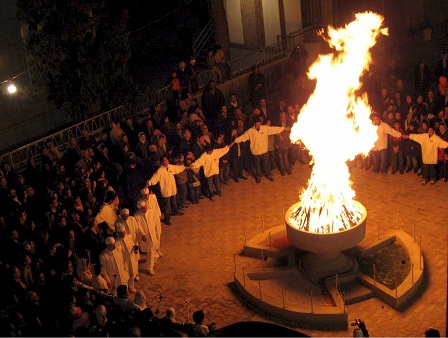
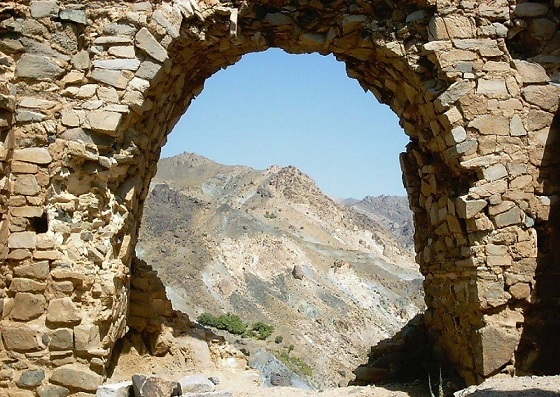
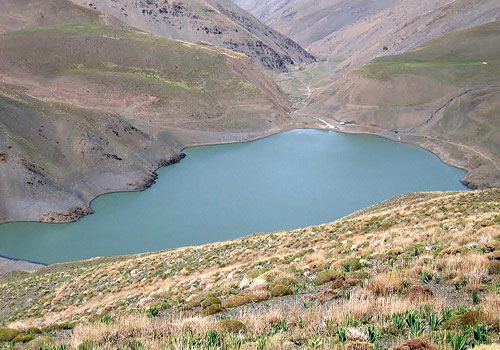
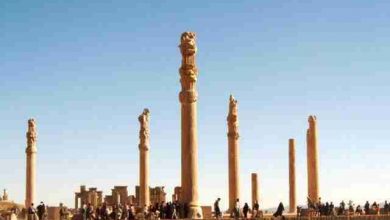
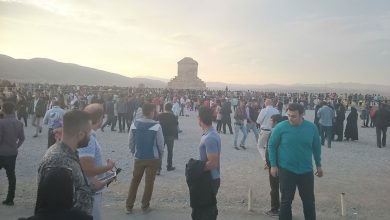

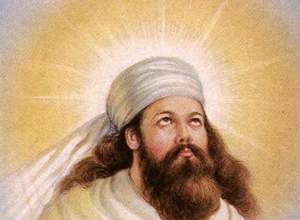
Hello, it was interesting content.
I am from Nishaburi and I found a place that I guess is the fire temple.
Of course, they turned the fire temple building into a shrine of one of the fake imams. But all the evidence shows that it used to be very, very important here. And Zoroastrian signs can be seen from far away there.
The writing was in Khouri
that was perfect.
Thank you for this article . Regarding the sacred cedar of Zoroaster, I must say that it was not in Kashmir but in the Kashmir region (A small area after Kashmir ) And after it was cut off by the order of the cursed Mutawakkil, the Iranians built a minaret in its place, which is the same building that is now in Kashmir and is being destroyed, and no one cares about that dear building.. In fact, this is how I realized that the original Kashmir was not where I live now, but in the Kashmir region . If you want more information about Saru and Minar and Azarbarzin Mehr, I am at your service .
I am very happy that this article has received your attention
I hope the readers will be satisfied with the next content.
I will be very happy if you share your valuable comments with me and all the lovers of the ancient history of Iran.
Thanks a lot